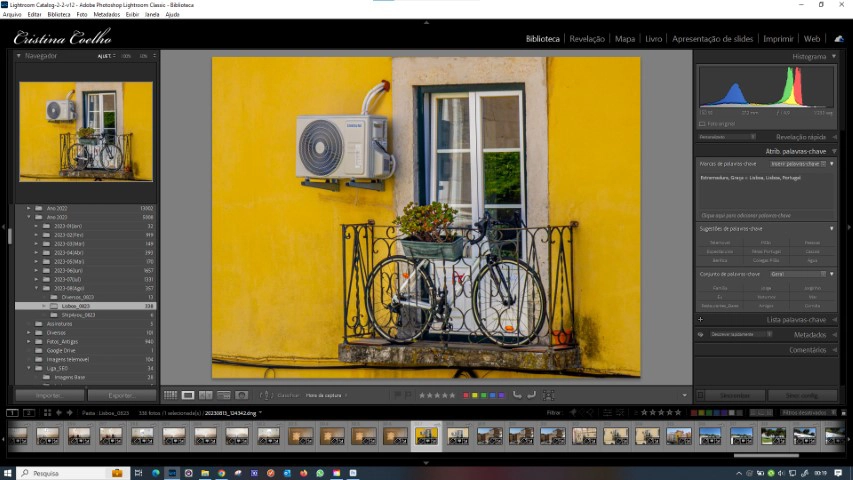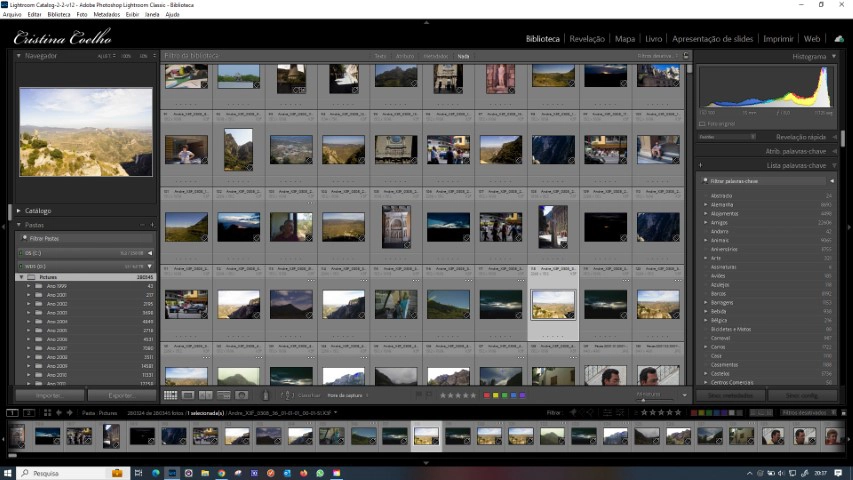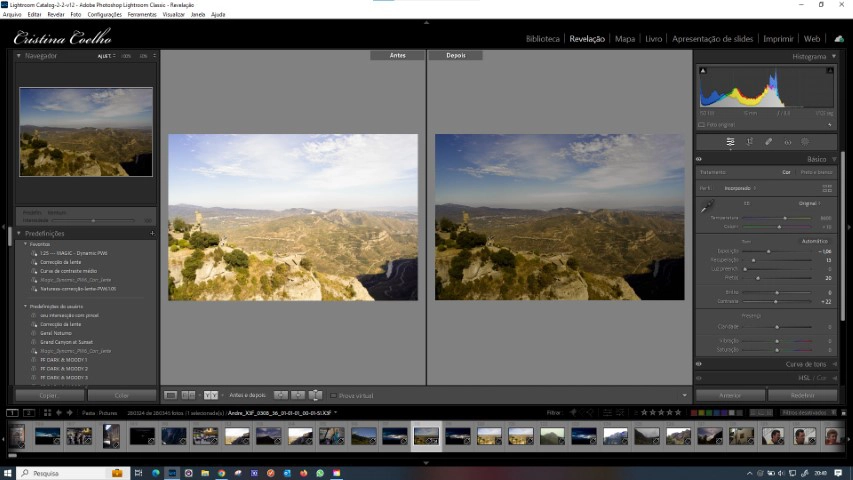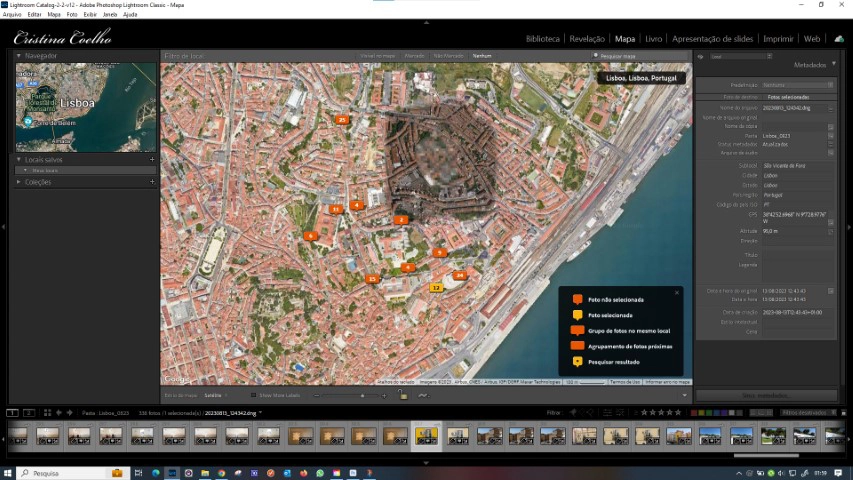I know it may sound like an overstatement, but Lightroom Classic changed my life, realy.
For a few years I was looking for the best solution to organize my photos. I tested several programs from free to paid, but none did exactly what I wanted.

Lightroom Classic changed my life
I discovered ACDSee and for a few years I used this application to organize all my digital photos.
Unfortunately, it wasn’t what I wanted and although it was cheaper than Lightroom, I ended up taking advantage of an Adobe campaign and fell in love with Adobe Photoshop Lightroom, as it was called at the time.
A bit of history
I started working with Photoshop Lightroom from version 3 at the end of 2010 and kept upgrading until version 6.
It later became Lightroom CC and was integrated into Adobe’s Creative Cloud, with the closed version coexisting with the subscription version for some time.
Until, around the end of 2017, Adobe switched all its applications to subscription.
The advantages of this change far outweighed the fact that I had to pay an annual fee.
In reality, I was already paying more or less an annual fee because every time an update came out, it was paid for.
Let’s just say that, when it comes to Lightroom, I’m not exactly a newbie…
I’ve been working with Lightroom for a few years now and now, as part of Creative Cloud, it’s become my inseparable companion.
What is Lightroom?
Today there are two versions of Lightroom, or rather 3:
- One for those who like to have all their photos well organized and more advanced editing features, Lightroom Classic.
- The other two versions I’ve yet to mention are for those who prefer to work in the cloud:
o Lightroom – a desktop or web version, with a more simplified organization based on albums and AI (as far as keywords are concerned).
o Lightroom Mobil – a version for smartphones and tablets, which follows the same rules as Lightroom but also includes its own capture software or camera.
Although I work with all of them, in due course I’ll tell you in more detail about Lightroom, or LR as it’s commonly known, and Lightrrom Mobil.
But it was LRC or Lightroom Classic that changed my life and that’s what I’m talking about today and will continue to talk about in the near future.
For those of you who don’t know, but have probably already heard, Lightroom Classic is a photo organization and editing software developed by Adobe.
It really is one of the most popular programs among professional and amateur photographers, and it’s not hard to see why.
With it, you can organize and edit photos quickly, easily and with incredible results.
But what really won me over about Lightroom Classic was its organization and the fact that all the edits made to my photos are non-destructive, meaning I don’t need to save the original photos and edits and therefore save a lot of disk space.
Some organizational features
Before, I had thousands of photos scattered all over my computer, although I always organized them by year, month and theme, I was missing a lot more.
I would spend hours looking for a specific photo and often ended up giving up.
With Lightroom Classic or the old versions of Photoshop Lightroom, everything changed.
I was able to keep the folder structure I had, but with one click I could have all the photos from a certain date, taken with a specific camera, a certain location (when taken with a cell phone with GPS information), or according to the rating I gave them.
That’s right! I could choose my photos and classify them according to my preferences or what I wanted to do with them later.

Of course it all sounds easy, but my need for organization always goes further than that, so I started to create a structure of keywords that would define each of the photographs I took.
All my work structuring the Lightroom library now allows me to find any photo in a matter of seconds. That was my goal and it was completely achieved.
With the emergence of new technologies, the latest versions have brought the possibility of identifying faces and the application is able to learn who they belong to, making it easier to find our friends and family.
Of course, you’ll need my help to name the various faces, but the suggestions are pretty reliable.
Everything is very easy, but it’s a lot of work, but the results outweigh everything, and the productivity achieved when searching for any photo is worth all the hours spent creating and configuring keywords, identifying people and creating collections.
Selecting the photos we like best, the ones we want to delete, the ones that are good for printing is done in minutes.
One of the selections I make is the photos I want to edit.
This allows me to work on just that group instead of editing all the photos.
And that’s the motto for moving on to the next thing that made Ligtroom change my life.
Let’s talk a bit about editing
In addition to the library and organization component, Lightroom Classic also helped me little by little to improve the quality of my photos and to understand that editing was nothing more than developing negatives, especially when I started working in RAW and DNG.
It’s very easy to make quick adjustments using its basic editing tools while still in the library module.
To go a little further, just move on to the developing module where you’ll find many more adjustment options.
I can adjust exposure, color temperature, contrast, image definition and colors.
I can improve the horizon line, crop to other dimensions or just improve the perspective.
There are many other elements that can be adjusted and that make all the difference to a photo.
All without altering my original photo.

I can try out different edits and choose my favorite while keeping the original untouched.
When I started capturing all my photos in RAW and DNG files, I didn’t need another application to convert them into JPG or any other extension.
The RAW and DNG versions are the originals. The edits we make are stored in the library.
When we export the photo with the respective edit to jpg, we are exporting the final product ready to be printed or displayed.
Lightroom Classic is extremely easy to use.
Even if you have no experience in photo editing, you can learn how to use the program in a matter of minutes.
And you can always count on a very active community of users who are always willing to help, in addition to Adobe’s own tutorials and all the experts who work and help Adobe improve its products.
Other features
Lightroom Classic isn’t just a library for organizing and developing, there’s also a printing module, book creation, slideshow creation, a photo location map and a web module.
I’ve tested and worked with all the modules, but I confess that I use them very little.
The Web module is good for preparing HTML web galleries in a simple way.
The print module allows you to print directly from Lightroom and create print templates for later use.
The slideshow module allows you not only to create presentations with collections of photos, but also to insert music and create a video of the presentation.
The map module shows the location of all the photos that have GPS coordinates and also allows you to assign a more correct location if you wish.
Normally, the ones that appear immediately are photos from cell phones that have the geolocation feature activated.
Finally, we have the book module, which is used to create photo books with the special feature that they can be sent immediately to one of Adobe’s partners for printing.
If you don’t want to send them to print, you can always convert them to pdf and print them wherever you want.

Of all these additional modules, the one I use most often is the map because when I go on a trip I try to geolocate all the photos, whether they come from my cell phone or any other camera.
The Web module has also been very useful for publishing quick galleries on websites.
The slideshow module can be used to play a few quick games, but there are other, better solutions.
The finale
Anyway, I could go on for hours about how Lightroom Classic has changed my life and all its features, but I think you get the idea.
If you’re an amateur or professional photographer and you don’t know this tool yet, I strongly recommend that you give it a try. I’m sure you won’t regret it.
This is the first of many articles intended to help you discover the world of Lightroom Classic, or just LRC, with practical explanations and useful tips so that Lightroom, or rather LRC and LR, can change your life too.
The next step will be to start explaining the various LRC work panels.
Stay tuned for future articles and, in the meantime, you can browse my website and see some of my galleries.
Thank you for visiting. Come back often


